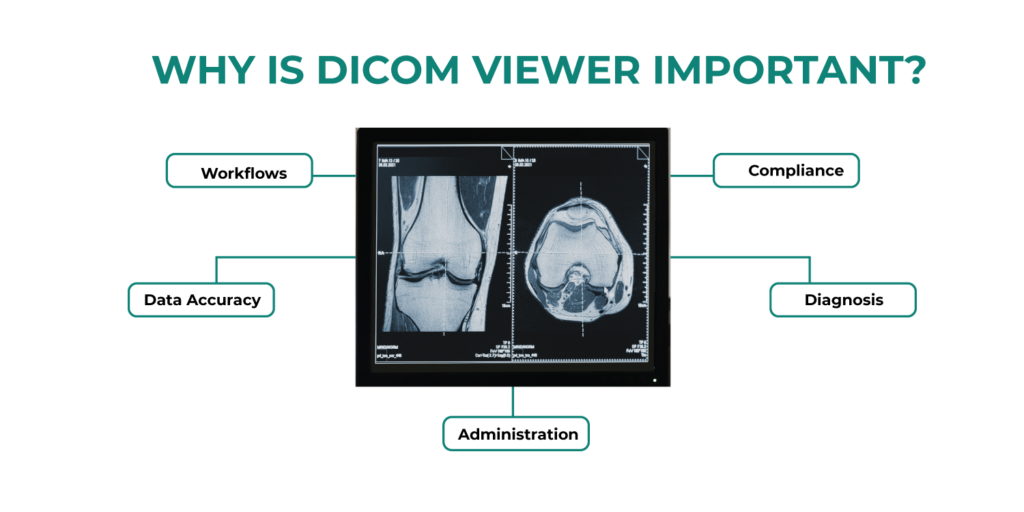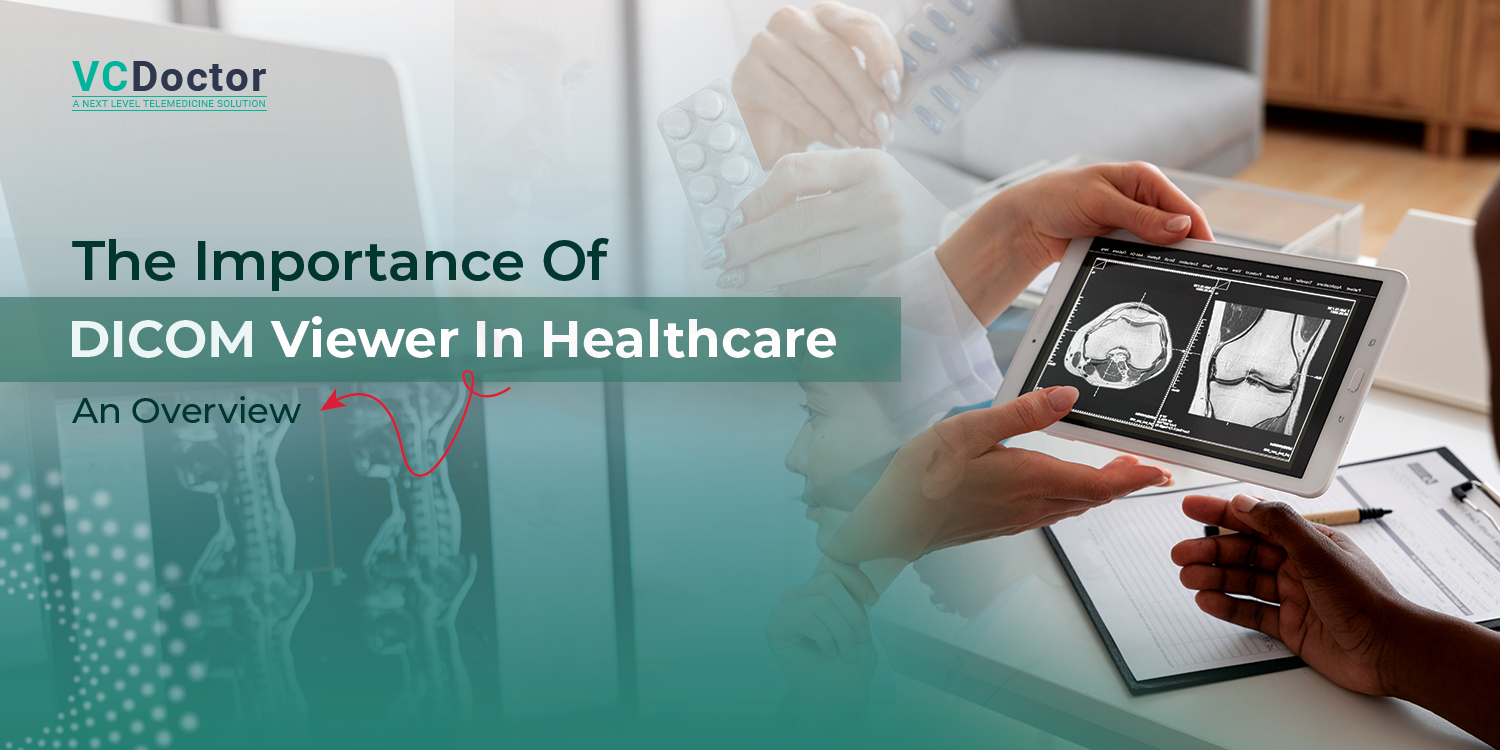The Importance of DICOM Viewer in Healthcare: An Overview
In the past decades, the healthcare sector has seen its peak in the very short run. It not only became technically adept in dealing with new wearable technologies but contributed many high-profile services in the meantime. One of the pioneer services the healthcare sector has put to the sea is DICOM. Now all the readers are now contemplating What is DICOM Viewer is in healthcare and how does it work? Well, the answer is well explained in the article.
In the nutshell, DICOM is a worldwide accepted phenomenon in the medicine and healthcare sector. It was introduced in the year 1985 with lots of expectations.
Table of Contents
- What is DICOM Viewer in Healthcare?
- What is the brief history of DICOM?
- Why Was DICOM Viewer Created?
- Why is DICOM Viewer Important?
- What Are the Advantages of DICOM Viewer in Healthcare Services?
- Conclusion
- FAQ’S
What is DICOM Viewer in Healthcare?
DICOM stands for Digital Imaging and Communications in Medicine. These are some sort of images needed for the exchange of information on health grounds. It has positively consumed the healthcare industry and made patient care more promising.
Digital Imaging and Communication in Medicine is abbreviated as DICOM. It is a global protocol to be followed whiles the exchange of medical information. The data are generally shared in image formats. The protocol defines the file format which is either DCM or DCM30 (DCM3.0) file extension.
Radiant DICOM viewer is deployed everywhere in medical lines where data can be exchanged in image formats such as MRI, CT, X-ray, Ultrasound, Camera, etc. Therefore, the DICOM makes sure that all the medical equipment deployed at the clinics, medical imaging centers, and hospitals will work parallelly and will deliver the medical images accurately.
What is the brief history of DICOM?
DICOM is a medical standard originated by the American College of Radiology (ACR) and the National Electrical Manufacturers Association (NEMA). In the rising 1980s, it was hard for anyone other than the manufacturer itself of computed tomography or magnetic resonance imaging, to decode the image that is obtained from these machines.
Lately, the radiologist and physicists have wanted to study the images for dose planning for radiotherapy. Having said that, Nema and ACR formulated a standing committee in 1983. Their first edition, ACR/NEMA300, titled “Digital Imaging & Communications” was put to sea in 1985.
After this, many ups and downs, and modifications were conducted, and final versions of DICOM services were released for healthcare providers.
Why Was DICOM Viewer Created?
DICOM was created to make possible the exchange of information with the help of images or charts. It allows medical practitioners to set up some rules in sharing medical images and associated information between imaging equipment from different vendors, computers, and hospitals.
The best utilization was seen when vendor A produced a computer tomography (CT) and vendor B produced a magnetic resonance imaging (MRI) scanner that can share images with PACS from vendor C utilizing the DICOM as the common language.
It is a method of decoding the images for the radiotherapy exchange of information as explained in the definition above. Thus, brings the utility of DICOM and PACS services for reading the medical reports and planning the medicine, and further treatment.
Why is DICOM Viewer Important?
With the rapid growth in the acceptance of technology in the healthcare sector, DICOM proved to be the pioneer tool for handling information from prominent technologies like CT Scanner, MRI, Ultrasound, etc. But neither of the above paras describes the utility of the DICOM in healthcare. Hence, our team has congregated some points which beautifully explains the imperatives of DICOM in the Healthcare Industry:

1. Compliance
MPPS service imparts legal compliance and quality control when using DICOM. It tracks and maintains radiation information, among other things. The system was originally crafted for medical practitioners who want to execute accurate plan dosage for radiation therapy.
2. Workflows
It has refined the workflows and allows a medical practitioner to obtain some hope and promising results from the reports originated from DICOM. It also helped in various activities like:
- Procedure Scheduling
- Exposure Duration
- Accurate Reporting, etc.
3. Diagnosis
The traditional image format i.e. Jpeg and Tiff do not give patient information and procedures adopted, hence, these are not useful at all. DICOM service includes relevancy in the patient info, examination, equipment utilized, etc. This is why it is important in the medical stream.
4. Data Accuracy
Data accuracy is offered in a single side of data entry, which remains at the acquisition equipment endpoint. DICOM sets a protocol that enables acquisition operators to make precise decisions relying on correct details in the name of MPPS messages. The maps message also transfers exceptions and error messages and automatically alerts other systems and users about errors.
5. Administration
The maps are the regulatory body here and gather information which makes easy reporting and understanding of information. The information includes:
- Consumable like film
- Devices
- Supplies
- Automated Billing
- Inventory Management
DICOM also offers a storage commitment service that ensures that images are kept separately from the acquisition equipment. This can be released to acquire new images in a variety of procedures.
What Are the Advantages of DICOM Viewer in Healthcare Services?
Now that the DICOM is ruling over the healthcare industry, what benefits it is driving to the sector comes as a priority. Thus, lets snoop into the advantages delivered by the DICOM so far:
1. Integration with IT Sector
Many times it’s been seen that incompatibility and improper straight method to save pathology images sets a major step-back in the adoption of digital pathology. The DICOM standards are made of PACS vendors, pathologists, and other vendors.
The execution of digital pathology into the DCIM levels was incorporated in 2010. This feature was embraced by the healthcare providers, as it offered them the opportunity to utilize digital pathology in healthcare with their existing IT system without many expenses.
2. High Performance
The places at which DICOM images are kept show high performance, whenever images are viewed. The highest resolution captures the highest amount of information. Supplement 145 offers an approach to keep large images in pathology and mapping of sub-regions from the layers in DICOM units.
3. Complete Scanning & Image Reviewing
People who ask how DICOM is used for healthcare services should read this context completely. Many scanners in the present time do not snap the entire slide at the highest resolutions. Such images are termed sparse images and are not in the DICOM standards.
It instructs the images not to contain the captured areas and make a small image. This entire process helps decrease the scanning time.
4. Saving Images & PHI
Well, the answer is clearly understood by the information presented here. Moreover, the DICOM accommodates patient and image-centered information that is accurately saved using tags. Any system that is capable of reading the image can access and display the data. The header containing the information enables the captured images to stick with a patient in the PACS.
Do you want to experience the best technology in Healthcare with VCDoctor? Join Now.
Conclusion
The article is a piece of information about the DICOM and its utilizations. The posts contain the meaning, benefits, etc. which are leading the healthcare sector towards the 7th cloud. But, there are a few limitations like Slowing Scanning, Lack of Improper Indexing, Difficulty in the DICOM header, etc. which come as handy drawbacks.
The main aim of DICOM is to provide cross-vendor interoperability in various devices that can deal with digital medical images. Hence, DICOM is soon going to be the basic need when operating the healthcare business.
FAQ’S
1. What are the benefits of DICOM in medical imaging?
DICOM viewers offer better visualization and analysis of medical images. With improved efficiency, providers can diagnose and treat patients more effectively.
2. How do DICOM viewers ensure patient privacy and security?
DICOM viewers have built-in security features. They are designed for patient privacy and comply with HIPAA regulations.
3. What types of medical images can be viewed using a DICOM viewer?
X-rays, CT scans, and MRIs can all be accessed and viewed using a DICOM viewer.
4. Can DICOM viewers be used to share medical images?
Yes, DICOM viewers can facilitate the sharing of medical images between healthcare providers and institutions.
5. Are there any regulations or standards that apply to the use of DICOM viewers?
Yes, there are regulations and standards that govern the use of DICOM viewers in healthcare, such as HIPAA and HL7.
6. Can a DICOM viewer be integrated with an electronic health record (EHR) system?
Yes, a DICOM viewer can be integrated with an EHR system.





I liked the research and information provided here. It’s a fantastic post that can help to understand what is DICOM viewer in healthcare. Thanks for this post.
Thanks for explaining DICOM viewer and its uses of this in the healthcare industry. I liked this post because of the simple and smooth UI and well-orgnised content.
Excellent information on the DICOM viewer. great content with fantastic optimization. I read and understand post easily. Thank you for sharing. Keep it up.